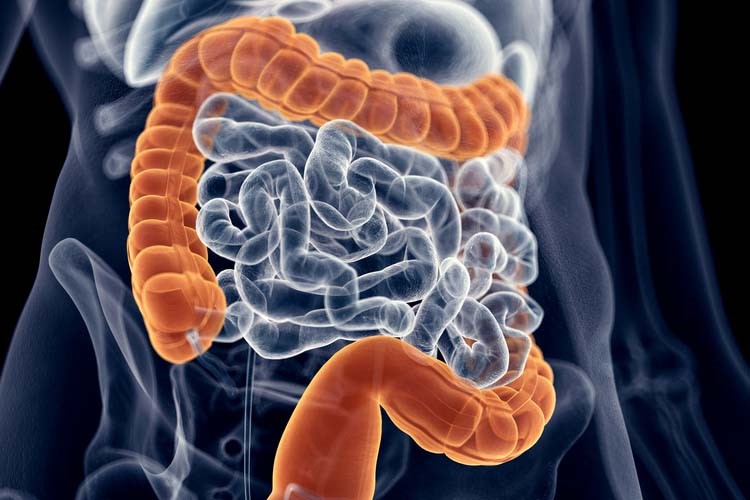
What is meant by malabsorption and what treatments it involves
Malabsorption syndrome refers to a set of symptoms and signs caused by insufficient absorption of nutrients by the mucosa
The pathologies that can cause a malabsorption syndrome are different and the symptoms and laboratory alterations depend on the type of nutrient that is not absorbed.
What is malabsorption syndrome?
Malabsorption syndrome can be the indicator of numerous pathologies, of different types and severity, which involve the alteration of 1 of the 3 mechanisms involved in the absorption of nutrients:
- digestion;
- absorption by the intestinal mucosa;
- transport of substances in the bloodstream and lymphatic system.
Symptoms of malabsorption syndrome
The symptoms of malabsorption are generally of the type:
- gastrointestinal, such as diarrhoea, weight loss, bloating and abdominal pain;
- systemic, related to the fact that specific nutrients that the body needs are not absorbed. In this case, anemia, alterations of coagulation or metabolic indices (for example, hypocholesterolemia) may occur.
There are also specific symptoms that depend on the type of nutrient that is malabsorbed.
In this case, they can be extraintestinal, for example, of the type:
- osteoarticular, due to incorrect absorption of magnesium and calcium, which lead the patient to feel asthenic or have bone pain and cramps;
- endocrine, such as amenorrhea, sterility and impotence.
The causes
The causes of malabsorption are different and must be sought by the doctor based on the specific symptoms that the patient reports.
The main ones are:
- diseases of the gastrointestinal tract, which involve an alteration of the intestinal mucosa which prevents the correct passage through the cells of the digested substances present in the lumen and which must then pass through the cell to pour into the bloodstream. A frequent example of this condition is represented by celiac disease, in which there is a flattening of the intestinal villi, particular anatomical structures intended to absorb nutrients. Inflammatory bowel diseases and enzymatic deficiencies of the intestinal mucosa also belong to this group of pathologies (for example, lactase deficiency which is responsible for the very frequent lactose intolerance);
- diseases that do not concern the intestine, such as diseases of the pancreas, liver or biliary tract, tumors of the digestive system. In this case the malabsorption is linked to a ‘maldigestion’
- due to the lack of pancreatic enzymes or bile which prevent the correct breakdown especially of duodenal fats;
- endocrine diseases, such as diabetes or amyloidosis, which can lead to an alteration in the passage of substances from the intestinal lumen;
- post-operative complications, such as short bowel syndrome or damage caused by radiation therapy, intestinal resection surgery or gastrointestinal bypass, conditions involving a reduced reduction of the absorbent surface or an accelerated transit of substances to be absorbed
The diagnosis
In the presence of symptoms that may suggest malabsorption, it is essential to hear the medical opinion who, for the correct classification of the problem, will prescribe laboratory tests and tests on the faeces, to confirm the suspicion, and subsequently second level tests to determine the cause of the same.
The diagnosis of this condition is almost never immediate, due to the fact that there are numerous pathologies that generate it.
For this reason, specific tests will be needed to support blood tests to investigate the cause and confirm the diagnosis.
How is malabsorption treated?
To resolve this condition it is necessary to understand what was the cause that led the patient to develop this syndrome. In this case, the underlying pathology will then be treated.
As far as severe cases of malabsorption are concerned, it may be necessary to resort to parenteral supplementation of substances in which the body is lacking (administration of iron, albumin, potassium, etc. in a vein) to restore, once the underlying pathology has been identified, the correct digestion-absorption mechanism.
Read Also
Emergency Live Even More…Live: Download The New Free App Of Your Newspaper For IOS And Android
Irritable Bowel Or Other (Intolerances, SIBO, LGS, Etc.)? Here Are Some Medical Indications
Autoimmune Enteropathy: Intestinal Malabsorption And Severe Diarrhea In Children
Esophageal Achalasia, The Treatment Is Endoscopic
Oesophageal Achalasia: Symptoms And How To Treat It
Eosinophilic Oesophagitis: What It Is, What The Symptoms Are And How To Treat It
Gastroesophageal Reflux: Causes, Symptoms, Tests For Diagnosis And Treatment
Irritable Bowel Syndrome (IBS): A Benign Condition To Keep Under Control
Esophagogastroduodenoscopy (EGD Test): How It Is Performed
Symptoms And Remedies Of A Gastro-Oesophageal Reflux Cough
Gastro-Oesophageal Reflux Disease (GERD): Symptoms, Diagnosis And Treatment
What Is Esophagogastroduodenoscopy?
Indigestion Or Dyspepsia, What To Do? The New Guidelines
Dyspepsia: What It Is, Symptoms, Diagnosis And Treatment
Gastro-Oesophageal Reflux: Symptoms, Diagnosis And Treatment
Functional Dyspepsia: Symptoms, Tests And Treatment
Straight Leg Raise: The New Manoeuvre To Diagnose Gastro-Oesophageal Reflux Disease
Gastroenterology: Endoscopic Treatment For Gastro-Oesophageal Reflux
Oesophagitis: Symptoms, Diagnosis And Treatment
Flip, The New Test For Oesophageal Motility Disorders


